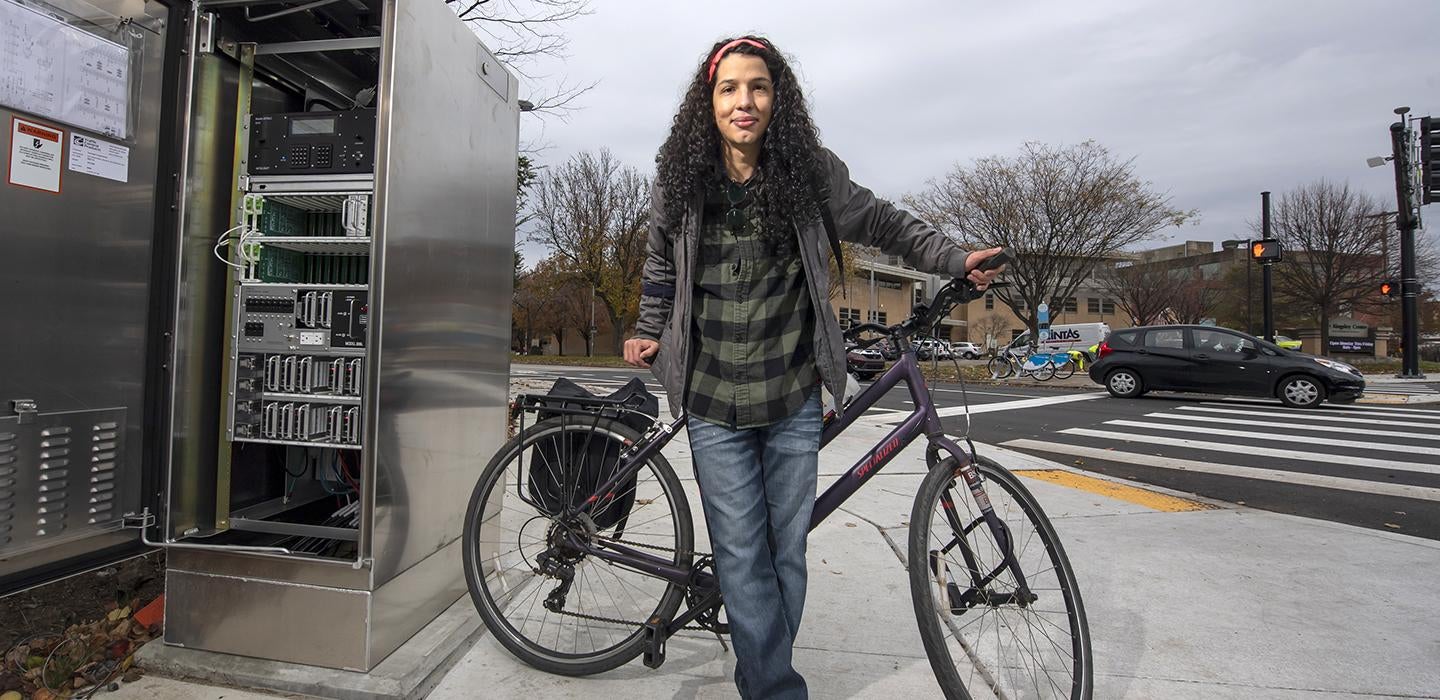
Subscribe to Pittwire Today
Get the most interesting and important stories from the University of Pittsburgh.Mateus Martins (ENGR ’19G) is making Pittsburgh more equitable through an uncommon route — by improving the city’s streets.
As a staff engineer in the City of Pittsburgh’s Department of Mobility and Infrastructure, his work is about more than ensuring Pittsburghers don’t end up in traffic jams; he wants to make the city’s roads as accommodating to cyclists and pedestrians as they are to cars.
“When it comes to traffic routing, the old way of thinking is ‘continuous movement is ideal movement’ — the same way we think of our home plumbing. As long as the water is flowing through our pipes, the plumbing must be working,” said Martins. In other words, getting cars down the road as fast as possible was once the definition of success.
“Thankfully, that’s not the case anymore; now our approach is multimodal. We design intersections to recognize pedestrians and cyclists as equal users of the road.”
Martins’ work is primarily focused on maintenance and updates of traffic signals operations. Anywhere in the city, said Martins, you can find a traffic signal that is 40 or even 50 years old. Because Pittsburgh streets were primarily planned with a sole focus on vehicle transportation, today’s city engineers are challenged to creatively retrofit streets for multimodal use.
[Read More: Pitt is BikePGH’s Organization of the Year]
In Pittsburgh’s East Liberty neighborhood, a short distance from Pitt’s campus, is Martins’ teams’ latest project — a revamp of the intersection of Frankstown Road, East Liberty Boulevard and Broad Street.
Several aspects of the intersection encourage pedestrian safety, including a leading pedestrian interval that gives people crossing the street a three-second head start and accessible signals that use sonic cues to help blind and visually impaired pedestrians know when they can cross.
Pittsburgh cyclists will also appreciate the intersection’s sharrows — road markings used to indicate a shared lane for bicycles and automobiles — as well as two-stage turn queue boxes — green pavement markings in which a cyclist can safely make a left turn by stopping within the intersection and waiting for the corresponding green light.
Implementing such multimodal approaches to transportation infrastructure supports lower-income people who cannot afford a personal vehicle to get to work. About 23% of Pittsburgh households reported having no access to a car in the latest American Community Survey administered by the U.S. Census Bureau. Yet, research indicates that access to transportation is the factor most likely to influence household economic success.
Making roadways friendly to pedestrians and cyclists also decreases reliance on vehicles and helps to reduce a city’s air pollution levels. In Pittsburgh, residents of poor and minority neighborhoods experience a higher rate of air-pollution-related deaths from coronary heart disease, according to a study released in 2020.
“It will take a collective effort to shift Pittsburgher’s primary mode of transportation from personal vehicle usage to public and non-motorized transportation, and I am happy to contribute with my skills as an engineer,” said Martins.
A Pittsburgh boomerang
Martins first moved to Pittsburgh in 2015 as an exchange student with Science Without Borders, a program sponsored by the Brazilian government, to complete a year of undergraduate study at the University of Pittsburgh in the Swanson School of Engineering. He was a standout student.
“I was impressed by Mateus’ passion for transportation engineering. He excelled in his classes and was great at working on team projects,” said Mark Magalotti, a lecturer in the Swanson School. Recognizing Martins’ academic potential, Magalotti invited him to apply for graduate school. Martins returned to Pitt in 2018 to complete a Master of Science in Civil Engineering and has remained in Pittsburgh ever since. He also took courses in the Graduate School of Public and International Affairs.
“My time in graduate school was a chance to dive deep into the field of transportation engineering,” said Martins. “I learned skills that I now use in my job as a traffic engineer, such as developing transportation models and scheduling construction work. I am also grateful that I was able to take classes in public policy. I was prepared to enter the public sector,” he said.
— Nichole Faina


